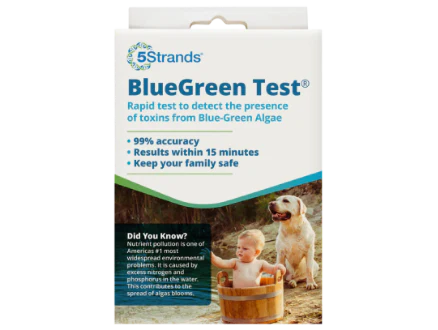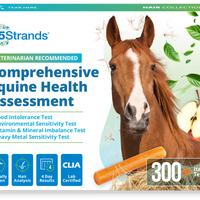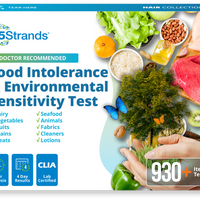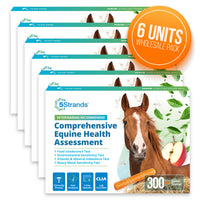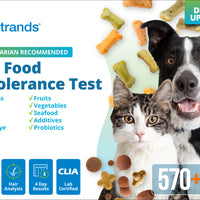What is The Elimination Diet?
An elimination diet is an individualized eating plan carried out for a certain length of time. It omits a specific food or a group of foods believed to be causing an adverse food reaction and creating unwanted symptoms in the individual. By removing certain foods for a period of time and then reintroducing them, you can learn which foods are causing symptoms or making your symptoms worse. Most people think in terms of food reactions as being a rapid allergic (immune system) reaction. However, the body can react to foods where the response may not be so immediate (making it more difficult to identify) and it may not be tied to an immune system response. This is called a food intolerance. Since it can take up to 48 hours to identify a food intolerance, it is almost impossible to figure out what food is triggering our symptoms. Food intolerances can be triggered by consuming sugars, proteins, common food additives (artificial colors, preservatives, antioxidants, and flavor enhancers) and more. Food elimination diets are considered the “gold standard” in determining which food items are creating unwanted symptoms and contributing to an undesirable health state.
Who Might Benefit from an Elimination Diet?
Individuals that are experiencing chronic health conditions and symptoms that have not really responded to traditional medical treatment should benefit greatly from conducting an elimination diet. These people would include those that are struggling with an autoimmune disorder, a metabolic syndrome, low energy levels, a known food allergy, IBS, leaky gut syndrome, eczema, acne, learning disorder such as ADHD and autism, migraine headaches, GERD, and eosinophilic esophagitis (EoE).
What Symptoms Can an Elimination Diet Help With?

Food intolerance symptoms will vary but the following are the most common:
- Abdominal pain
- Diarrhea
- Constipation
- Bloating
- Brain fog
- Fatigue
- Flatulence
- Headaches
- Joint pain
- Nausea
- Skin irritations
Why Should I Follow an Elimination Diet Meal Plan?
In looking at the list of symptoms above, most of us have been living with these types of symptoms for so long that we have accepted this as our “normal.” We have gone to see our health care providers and they have not tried to find the root cause of these issues. They give us a prescription and then send us on our way. We feel defeated and think that we must accept our situation and just live with it. BUT, we should not accept this as our normal. What you don’t know is that most health care providers have little to no education and training on diet and nutrition. They do not know what the difference is between a food allergy, sensitivity, or an intolerance. Most do not even believe in the later two.
How to Do an Elimination Diet
Here are the steps to follow in order to effectively do an elimination diet:
Plan, Plan, Plan ahead!
- Make sure you do not start your elimination plan right before a vacation or family event. You will be making a commitment for at least 4 weeks for the elimination plan and re-introduction phase will take at least 3 weeks.
- Make sure to let your family and friends know so they can support what you are doing instead of tempting or enticing you to want to go eat out something not on your plan.
- Search for recipes ahead of time.
- Purchase a journal to list the foods you eat and symptoms you might experience throughout the day.

- Removing foods is the key in conducting an elimination diet. You will need to stop consuming all common allergen/sensitive foods listed below for about four weeks.
- Keeping a food journal during this time to record how you’re feeling (any symptoms) and what you are eating is important. The information will be useful when you begin your reintroduction phase of the diet.
- After four weeks, you will begin to reintroduce one food group at a time. Eat the food daily for about 1–2 weeks. During this time, you will want to record any symptoms you might be experiencing. Notice any changes in symptoms between the elimination phase and the reintroduction phase.
- If you do notice that the symptoms have returned after beginning to eat one of the foods, you will want to eliminate it once again. Being symptom free is the ultimate goal! You will then continue with the next group of foods until you have reintroduced the foods that had been eliminated.
You can see that the process is a bit of trial and error, but it shouldn’t take more than 4–6 weeks to pinpoint foods that can finally improve your symptoms for good. Most people living with food-related health issues do not realize how poorly they honestly feel until the offending food agent(s) is completely removed for several weeks.
Foods to Avoid on an Elimination Diet Meal Plan:
There are only a handful of foods that will account for 90% of all food allergies: milk, eggs, peanuts, nuts, wheat/gluten, soy, fish and shellfish. However, with intolerances, there are many others. The foods that you must avoid are listed as follows:
Corn (corn oil, corn meal, corn starch, corn syrup)Eggs (baked goods, mayonnaise, meringue)Wheat & Gluten containing grains (wheat, durum, semolina, spelt, farina, farro, graham, kamut, rye, triticale, barley, malt, soy sauce)Dairy products (milk, cheese, yogurt, butter, whey)AlcoholRefined/added sugarNightshadesSoybeans and soy products (edamame, miso, soy sauce, soybean oil, soy milk)PorkShellfish/seafood (fish, shellfish, sauces, salad dressings)Peanuts (peanut oil, peanut butter)Processed food, fast food, packaged foods
What Foods Can I Eat on an Elimination Diet?
- Lean Meats (Avoid pork and shellfish) - Eating quality protein will help to stabilize your hunger and blood sugar. You can eat chicken, turkey, venison, salmon, tuna, mackerel, cod, herring, sardines, and even plant based options such as plant protein powder.
- Fresh or Frozen Vegetables - Eating vegetables of all colors is important. It will enhance your ability to repair DNA and reverse cellular damage.
- Fresh or Frozen Fruit - Consuming a wide variety of fruits each day is a great way to add the needed nutrients. However, please remember that fruit is “natural” sugar so you need to be careful as to not overeat them.
- Nuts and Seeds - Eating these foods will help to control hunger also. They are good for brain health and hormone production.
- Legumes - These are a great protein source and a complex carbohydrate. Consume them as long as you can tolerate them. EXCEPT for peanuts (yes, peanuts are actually a legume and NOT a nut)!
- Healthy Oils - It is always best to use plant based oils.
- Gluten-Free Whole Grains - Consume in moderation.
How long should I do an elimination diet?
For most people, it will take about 2-3 weeks to notice any changes in their symptoms. You will want to continue the elimination diet until your symptoms are gone or you are experiencing them very little. If after 4 weeks, you do not notice any changes in your symptoms, this could mean that:
- You are not following the plan correctly or you may need to modify it be removing additional foods
- Your symptoms are not being caused by a food intolerance.
What Exactly is the Reintroduction Phase?
After you have completed the elimination period and your symptoms have lessened or are gone completely, you will want to start adding back foods into your diet and determine if there is any change in your symptoms. You will want to start with one food and consume the food and see if you have any changes in the way you feel or develop any noticeable symptoms. If nothing changes, wait 2-3 days and then consume the food again. If the symptoms do not change, then wait another 2-3 days and eat it again. The reason you will want to wait 2-3 days is because intolerances can have a delayed reaction (up to 72 hours). Once you have consumed the food at least three times and you did not notice any symptoms, you probably do not have an intolerance to that food. You can continue to eat that food but in moderation. No food should be eaten everyday. 2-3 times per week is best for the average person. Next, you would move on to another food and proceed the exact same way.
After Starting an Elimination Diet Plan, How Soon Will I Feel Better?
It is difficult to say because we are all unique individuals. How one person’s body responds will not be the same as the next. Some people will start to feel better immediately. On average, most people will start to feel better after 2 weeks. If your unwanted symptoms are from a food intolerance, you should see the difference in the way you feel between 3-6 weeks. If you do not notice any changes after 6 weeks, your symptoms may not be from a food intolerance.
Please be aware that when a person starts an elimination diet, they could actually feel worse! For the individuals that have had a very poor diet, their body has a lot of “junk” to eliminate and clear out. During that elimination process, many toxins will be released. This could make you feel worse and your current symptoms could intensify or you might develop new symptoms. Don’t worry! This should only last a week. Once these toxins have dissipated, your immune system and intestinal linings will have had a chance to rebalance and heal. Your overall inflammation will reduce and your symptoms should lessen.
Please remember that this process is not a “one size fits all.” Since we are all unique individuals, our response times and reactions will be unique also. You should not compare your experience with someone else.
While there are other variations of the elimination diet, 5Strands Affordable Testing has come up with a simplified way of helping you conduct an elimination diet. Their food intolerance test offers intolerance testing for over 640 items. It includes proteins, grains, gluten, fruits, vegetables, seafood, additives, preservatives, food colorings, flavorings, sweeteners, beverages, dairy, fats, etc.
They utilize a home collection kit that you will take a hair sample for submission. Yes! I said hair. No painful blood sampling. This is simple and easy! They utilize bioresonance technology to determine what food items that your body is not resonating with and could potentially be causing your symptoms. They will provide a report that you can utilize for your own individualized elimination guideline.
The process is simple. Purchase the kit, register the unique ID number, Collect the hair sample, send the hair sample back to 5Strands, receive your testing results within 5-7 days of the sample being received at the processing center.
This testing report will take out all of the guesswork. You will only have to eliminate the foods that you registered an intolerance to according to the report. The items that you did not respond to will be used to construct your meal plan during the elimination period. This method is going to save you time and energy. There will be less frustration for you. The report is broken down into 3 different levels showing the severity of response. Ideally it would be beneficial and a time saver to be able to eliminate all three levels of food intolerances at the same time. If eliminating all levels at the same time is way too difficult, you can start by eliminating just the level 3 intolerances which are the ones that your body is responding to the most. Most of the time this is all you need to uncover the items that are causing the unwanted symptoms. However, if you do not notice any changes in the way you feel, you will then have to start eliminating the level 2’s and see if there are any changes. If you eliminate all the foods listed and you do not see any noticeable differences, then it is possible that your symptoms are not caused by a food intolerance and you should seek the guidance of your medical professional.
So instead of trying to do this elimination diet on your own, why don’t you give the 5Strands Food Intolerance Test a try!? There have been many successful customers that have had a life changing experience. Please remember that intolerances can be temporary and change. So don’t look at this as a limiting factor. This is not your forever diet! Your results are just a roadmap to better health!



